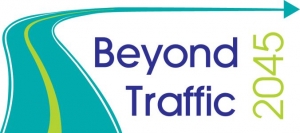
 Call it a mid-sized cities “throwdown.” The U.S. Department of Transportation (USDOT) this week announced its $40 million Smart City Challenge, a competition targeting mid-size American cities. The objective is to increase the use of technology to improve the way transportation systems move people and products.
Call it a mid-sized cities “throwdown.” The U.S. Department of Transportation (USDOT) this week announced its $40 million Smart City Challenge, a competition targeting mid-size American cities. The objective is to increase the use of technology to improve the way transportation systems move people and products.
Rather than have federal transportation experts try to determine what’s best for the nation’s cities, USDOT officials want those who deal directly with transportation problems at the local level to lead the efforts. The government needs to know what technological advances, data, local and regional partnerships and innovations will solve transportation problems regionally. In effect, city officials are being asked to seriously consider how to reinvent their own futures.
Cities with populations between 200,000 and 850,000 – there are nearly a dozen in Texas – will compete in the $40 million challenge. The winner will be awarded up to $40 million from USDOT to be used for design and implementation of its plan. Additionally, there is another $10 million award available from Vulcan, Inc., a private investment firm that invests in projects that provide solutions to some of the world’s biggest challenges. The additional $10 million for the winning city would be used to help establish a partnership with others involved in developing transportation technology innovations.
The USDOT, which has used public-private partnerships (P3s) successfully over the years for a variety of transportation projects, is hoping the partnership with Vulcan will demonstrate to cities the value of collaborating with the private-sector firms to solve transportation problems. Without private-sector capital, most cities cannot initiate large transportation projects because of their limited financial resources.
The Smart City Challenge stems from USDOT’s Beyond Traffic report issued earlier in the year. The report notes that the nation’s population, particularly in cities, is growing far faster than solutions can be implemented, especially in the area of transportation. The study indicates that the United States will add 70 million more people over the next three decades, adding to local transportation headaches such as transit woes, traffic congestion and safety issues for the traveling public.
The outcome USDOT officials are seeking in this challenge is for the winners to provide solutions that can be replicated in other cities.
Cities expected to compete are those that:
- Have an established public transportation system;
- Provide an environment that is conducive to demonstrating new strategies; and
- Have both the leadership and capacity to successfully initiate and carry out a new project.
Although the USDOT gives no specific examples of what types of proposals cities should examine, agency officials encourage improvements that will reduce carbon emissions, enhance mobility and improve safety. Program administrators stress that the winning proposals must meet technical criteria. Evaluators will be looking for projects where there is a firm commitment from both the public- and private-sector partners.
In Texas, cities such as Corpus Christi, Austin, Fort Worth and Laredo are eligible to participate as well as hundreds of other cities nationwide.
The first round of applications is due Feb. 4, 2016. From those applications, five finalists will be chosen and announced in May 2016. The final winner will be chosen in June 2016. In an age of transportation technology that includes connected vehicles, driverless vehicles, unmanned aircraft and more, cities should have no problems in finding innovative transportation solutions to suggest.
A handful of mid-sized Texas cities have a $50 million opportunity to make transportation better and safer through the use of technology. City leaders in Texas have been known for their visionary, forward-thinking ideas but it’s time to stretch the limits even more and win this national competition.
Texans would welcome a $50 million investment as well as the opportunity to again demonstrate the state’s ability to collaborate and lead in the area of transportation.
